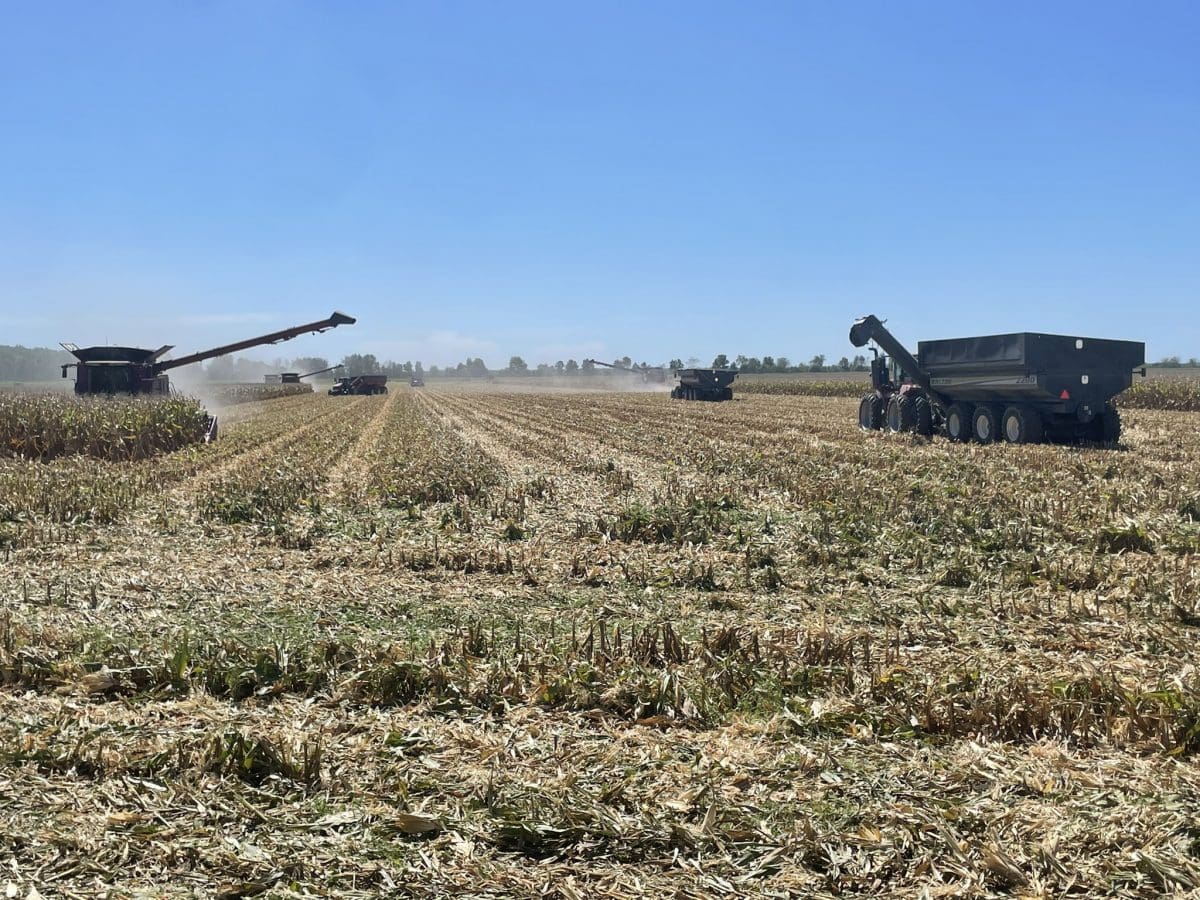
Harvesting corn in Illinois. Photo: Rubenacker Farms
NUMBERS in the USDA World Agricultural Supply and Demand Estimates September report released on Friday were mildly bearish for wheat, corn and oilseed markets.
“Overall the USDA didn’t do anything to reignite the bulls,” Lachstock Consulting said in its commentary.
“The numbers were generally just on the bearish side of expectations.”
USDA behind ABARES on wheat
The global wheat outlook for 2021-22 is for increased supplies, higher consumption, more trade, and higher ending stocks.
Supplies are projected to rise 7.1 million tonnes (Mt) to 1072.8Mt on the combination of larger beginning stocks for Canada, EU, and India, and higher production for Australia, India, and China.
USDA has lifted its estimate for Australia’s new-crop wheat by 1.5Mt to 31.5Mt, 1.1Mt behind the upwardly revised ABARES number issued last week.
The lift is based on Australia’s continued widespread favourable conditions to date, and is forecast to be Australia’s third-largest wheat crop on record.
India’s production estimate has been increased 1.5Mt to 109.5Mt on the Indian Government’s fourth advance estimate, and this would be India’s fifth consecutive record crop.
The estimate for China’s wheat production has been lifted 0.9Mt to 136.9Mt, mainly on a higher area estimated by China’s National Bureau of Statistics.
Canada’s 2021-22 wheat production has been trimmed a further 1Mt to 23Mt based on the Statistics Canada forecast issued August 30, and Argentina is now forecast to produce 20Mt, 0.5Mt down on the August figure because of dry conditions.
The outlook for 2021-22 US wheat this month is for reduced supplies, slightly higher domestic use, unchanged exports, and decreased ending stocks.
Projected 2021-22 US wheat ending stocks have been reduced to the lowest in eight years and are 27 per cent below last year.
USDA’s projected 2021-22 world wheat consumption is up 3Mt on the month to 789.6Mt. Most of the higher consumption is for feed and residual use, led by China, which increased by 1Mt to 36Mt.
Projected 2021-22 global wheat trade has been lifted 1.5Mt to 199.7Mt.
Largely behind this is higher exports for Australia, up 1Mt to 23Mt, and India, up 800,000t to 3.5Mt, which will more than offset reduced exports from Canada, down 0.5Mt to 17Mt.
Projected 2021-22 world ending stocks are increased 4.2Mt to 283.2Mt with India, EU, and Canada accounting for most of the increase.
Corn crop gets bigger
This month’s 2021-22 US corn outlook is for larger supplies, increased feed and residual use, greater exports, and higher ending stocks.
Projected beginning stocks for 2021-22 have risen because of reduced US corn exports and lower use in domestic ethanol production.
Beyond the US, this month’s coarse grain outlook is for larger production, greater trade, and increased stocks relative to last month.
On production, increases in the Chinese and Argentinian corn crops are seen as more than offsetting reductions for Russia and Serbia.
The estimate for China’s corn production has been lifted, mainly because of a boost in yield prospects based on near to above-average rainfall in the key north-east provinces of Heilongjiang, Jilin, Inner Mongolia, and Liaoning.
Argentina corn production is raised based on expectations of a larger planted area, and its new-crop corn exports are now seen at 39.5Mt, up 1Mt from last month’s estimate.
On barley, increases for Australia, Ukraine, and the EU are essentially offset by declines for Canada and Russia.
For China, corn feed and residual use for 2020-21 is lowered based on indicated soybean meal-equivalent protein consumption and expanded use of alternative energy feedstuffs such as barley and sorghum.
Subsequent year, 2021-22, non-US feed and residual use is raised, based mostly on a larger crop and lower expected internal market prices.
Food, seed and industrial use is lowered for 2020-21 and 2021-22 based on a reduction in the expected amount of corn used for ethanol and corn-product exports.
Despite a forecast increase in corn production, imports are unchanged for 2021-22 as the gap between China’s domestic and international corn prices is expected to persist, particularly in the feed-deficit south.
Corn imports are raised for Canada and Mexico but have been reduced for Vietnam, where Australian barley and Indian corn are taking some increased market share.
The estimate for non-US foreign corn ending stocks for 2021-22 is now seen at 261.9Mt, up 8.8Mt from the August estimate, mostly reflecting an increase for China.
Canadian canola cut further
US soybean supply and use changes for 2021-22 include higher beginning stocks, production, exports, ending stocks, and lower crush.
USDA’s estimate for non-US oilseed production is now 499.8Mt, down 1.5Mt, mainly because of lower canola production for Canada and the EU.
Partly offsetting is higher canola output for Australia and higher peanut production for India.
Canada is now forecast to produce 14Mt of canola, down 2Mt from the August figure as based on Canadian Government reports.
Lower canola supplies for Canada leads to lower exports of the oilseed and products to the EU, China, and the US.
Lower global rapeseed supply is offset by increased soybean beginning stocks, mainly driven by higher-than-expected 2020-21 imports for China.
Higher beginning stocks for China and higher US ending stocks account for most of the global 2021-22 soybean ending stocks increase, which are raised 2.7Mt to 98.9Mt.
Another notable oilseed change includes higher soybean meal imports for India as the government allows shipments of soybean meal made from genetically modified soybeans through October 31.
Source: USDA, Lachstock

HAVE YOUR SAY